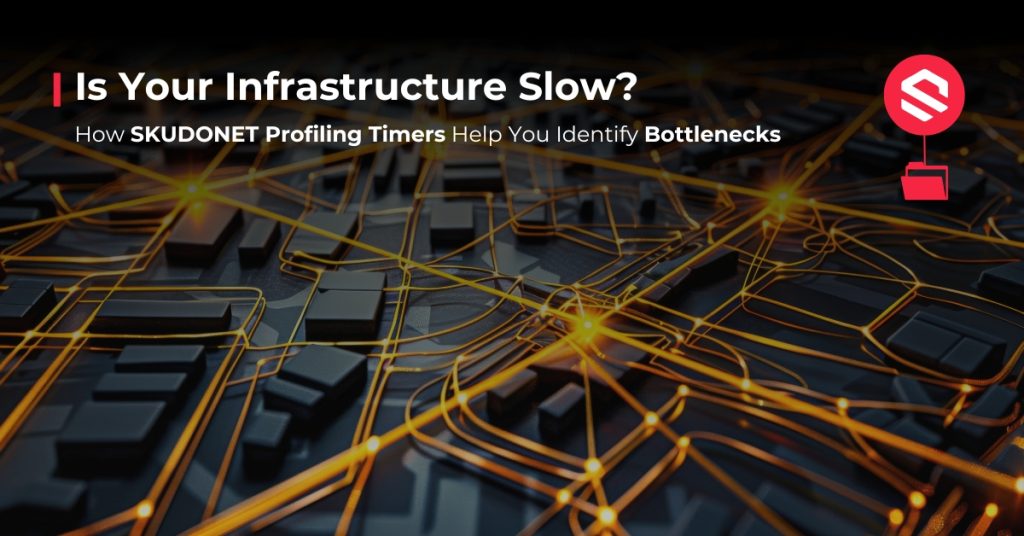Slowness in web applications and critical services isn’t just frustrating for users: it directly affects revenue, productivity, and trust in your infrastructure. Every second of delay in page load or service response can cause frustration, lost customers, and operational challenges for your IT team.
The problem is that, in many cases, teams don’t know exactly where the bottlenecks are occurring. Is there a delay in the network? In the backend? In client communication, or in the security layer? Without detailed visibility, diagnosing and fixing these issues can turn into a slow and costly trial-and-error process.
This is where SKUDONET Profiling Timers comes in.
What Profiling Timers Are and How They Work
SKUDONET acts as the critical point of your infrastructure: it balances loads, filters traffic, and protects your applications. Thanks to profiling timers, every request and response passing through your SKUDONET is analyzed with millisecond precision, generating detailed information about the timing of each phase of HTTP(S) communication.
The most relevant timers include:
- tcc (Time Connection Client): the time it takes for the client to establish a TCP connection with SKUDONET. For HTTPS, this includes the SSL handshake. High values may indicate network issues or client connectivity problems.
- trch (Time Read Client Headers): the time it takes the client to send request headers. Delays here can indicate slow clients or packet segmentation issues.
- tcb (Time Connection Backend): the time SKUDONET takes to connect to the backend and receive the connection. High values can reveal congestion or slow internal networks.
- wp1–wp4 (WAF Phases 1 to 4): the time SKUDONET spends analyzing each part of the request and response according to WAF rules. Delays in these phases may indicate heavy rules or high traffic processing.
- twbh / tdbc (Time Write Backend Headers / Data Backend Client): the times for sending headers and bodies to and from the backend. These are key indicators of backend speed and data transfer size.
- ti (Time Idle): time spent on internal SKUDONET tasks, such as header checks, load balancing decisions, logging, and session management.
- tt (Time Total): the total time SKUDONET spends processing the entire request, from when the client opens the connection to when the final response is received.
Each timer allows you to see exactly where delays occur and makes it easier to identify problems that were previously invisible. For example:
- If trbh is very high, you know the backend is taking too long to send the response.
- If tcc is high, the problem could be in client connections.
Benefits of Profiling Timers for Your Infrastructure
Quick diagnosis of slowness issues
You can immediately identify whether delays originate from clients, network, backend, or the security layer (WAF).
Comprehensive traffic visibility
Every request and response is logged with precise timing, size, and error data, enabling detailed analysis and historical tracking.
Proactive problem detection
By continuously monitoring timers, you can identify trends in slowness and take action before users are affected.
Data-driven optimization
Granular information lets you fine-tune load balancing configurations, identify slow endpoints, or adjust WAF rules to improve efficiency without compromising security.
Getting Started with SKUDONET Profiling Timers
Enabling profiling timers in SKUDONET is straightforward and gives you precise data for every request and response passing through your infrastructure. Once enabled, logs record all timers in milliseconds, providing detailed insight into where bottlenecks occur. These logs can be integrated with analysis tools like Grafana or ELK to visualize trends, detect anomalies, and monitor infrastructure performance in real time—without interrupting traffic or modifying your applications.
To enable them, follow these steps:
- Access the HTTP(S) profile you want to analyze under LSLB > Farms.
- Enable the ADVANCED view in the top right corner.
- Turn on the Log toggle in the Global tab (it’s disabled by default).
- Make sure the Profiling toggle is also activated.
- Save your changes.
From that moment on, SKUDONET will automatically measure all timers for each request and response, generating detailed logs that allow you to:
- Identify delays in clients, backend, or network.
- Analyze performance trends over time.
- Detect anomalies and proactively prevent issues before they impact users.
ℹ️ If you want to learn how to activate profiling timers and understand each field in detail, visit our technical article: [How to activate and understand SKUDONET HTTP(S) profiling timers]
Conclusion
Slowness in your infrastructure is no longer a mystery when you have profiling timers. SKUDONET provides the visibility needed to diagnose, understand, and optimize every phase of communication between clients and backend systems. With this information, your team can resolve issues quickly, enhance the user experience, and ensure that your critical applications continue running at peak performance.
Try SKUDONET Enterprise Edition free for 30 days and experience a more secure, scalable, and easy-to-manage infrastructure.


